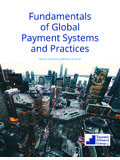Transcription of Payment, clearing and settlement systems in Korea
1 CPSS Red Book 2011 205 Payment, clearing and settlement systems in KoreaKorea CPSS Red Book 2011 207 Contents List of Introduction ..211 1. Institutional aspects ..211 The general institutional framework ..211 The role of the Bank of Korea ..213 The role of other private and public sector bodies ..215 2. Payment media used by non-banks ..219 Cash payments ..219 Non-cash payments ..219 Recent developments ..224 3. Interbank funds transfer systems ..224 General overview ..224 Large-value payment system ..225 Retail payment systems ..230 Foreign currency settlement systems ..235 4. systems for post-trade processing, clearing and securities General overview ..237 Confirmation system and trade repository ..238 Central counterparty and clearing Securities settlement system .
2 241 Use of the securities infrastructure by the BOK ..244 Korea CPSS Red Book 2011 209 List of abbreviations ARS ATM Automatic Response Service automated teller machine B2B/B2C business to business / business to customer BOK Bank of Korea BOK Act Bank of Korea Act BOK-Wire+ New Bank of Korea Financial Wire Network system CCP central counterparty CD certificate of deposit CFIP CLS Committee on Financial Informatisation Promotion Continuous Linked settlement CMS Cash Management Service CP CSD commercial paper central securities depository DVP delivery versus payment EFT Act Electronic Financial Transactions Act EFTPOS electronic funds transfer at point of sale FCFTS foreign currency funds transfer system FIC
3 Financial investment company FIFO FSC first in, first out Financial Services Commission FSCM Act Financial Investment Services and Capital Markets Act FSS Financial Supervisory Service IC KDIC integrated circuit Korea Deposit Insurance Corporation KEB Korea Exchange Bank KFCCC Korea Federation of Community Credit Cooperatives KFSB Korea Federation of Savings Banks KFTC Korea Financial Telecommunications and Clearings Institute KOSDAQ Korea Securities Dealers Automated Quotation KOSPI Korea Composite Stock Price Index KRW Korean won KRX Korea Exchange KSD Korea Securities Depository LVPS large-value payment system MoSF Ministry of Strategy and
4 Finance Korea 210 CPSS Red Book 2011 MPC Monetary Policy Committee MS MSB NCUFK magnetic stripe monetary stabilisation bond National Credit Union Federation of Korea NDF PVP RPS non-deliverable forward payment versus payment retail payment system RTGS real-time gross settlement SIPS systemically important payment system SSS securities settlement system Korea CPSS Red Book 2011 211 Introduction The payment systems of Korea consist of one large-value payment system (LVPS) and several retail payment systems (RPSs). The LVPS is BOK-Wire+, which is owned and operated by the Bank of Korea (BOK). Most of the RPSs are owned and operated by the Korea Financial Telecommunications and Clearings Institute (KFTC), the most prominent being the Electronic Banking system , the Cheque clearing system , the Interbank Remittance system and the ATM Network.
5 Securities transactions are matched, confirmed, cleared and settled mainly by the Korea Exchange (KRX) and Korea Securities Depository (KSD). The KRX operates two stock exchanges (the KOSPI and KOSDAQ Markets) and one futures exchange (the Derivatives Market), and is also the central counterparty (CCP) of the securities markets it operates. Exchange-traded securities are matched, confirmed and cleared by the KRX, and settled by KSD through its securities settlement systems (SSSs). Over-the-counter (OTC) securities are meanwhile confirmed, cleared and settled mainly by KSD. The final settlement assets vary depending on the type of securities and the markets on which they are traded. The cash legs of all stock transactions and on-floor corporate bond transactions are settled with commercial bank money; other securities transactions are settled with central bank money.
6 Several notable developments in Korean payment and settlement systems have taken place in recent years. With regard to the LVPS, the BOK began operation of its BOK-Wire+ system in April 2009, adding a hybrid settlement function to the existing real-time gross settlement (RTGS) system , BOK-Wire. This improvement was aimed at reducing participants liquidity burdens stemming from the rising funds transfer volumes associated with the rapid increase in the number of financial transactions. Significant changes have also been made to the retail payment environment. In particular, securities brokers are now allowed to provide funds transfer services to their non-institutional customers directly through the RPSs. Meanwhile, with the rapid spread of electronic payment instruments such as credit cards and online funds transfers, payment methods are increasingly shifting from paper-based to paperless ones.
7 Also, with the use of mobile banking expanding rapidly, a wider range of payment services are taking advantage of mobile communication technology. As in many other countries, active discussions on strengthening payment and settlement system safety are taking place in Korea . These draw on lessons from the recent global financial crisis. To this end, the BOK and other infrastructure operators have developed a reform plan for upgrading Korean SSSs. The establishment of a CCP and a trade repository for OTC derivatives is also under discussion. 1. Institutional aspects The general institutional framework With respect to the payment and settlement system of Korea , a broad range of laws and regulations govern transactions and the settlement details thereof, issuance and distribution of payment instruments, oversight of payment and settlement systems , protection for clearing and settlement agreements, etc.
8 The Bank of Korea Act (BOK Act), the Financial Investment Services and Capital Markets Act (FSCM Act) and the Electronic Financial Transactions Act (EFT Act), among others, clearly stipulate that the Bank of Korea (BOK) shall play a principal role in overseeing payment and settlement systems . Korea 212 CPSS Red Book 2011 Table 1 Laws relating to the Korean payment and settlement system Contents Law Commercial transactions Civil Act, Commercial Act, Standardised Contracts Act Securities exchange Financial Investment Services and Capital Markets Act Transactions Foreign exchange Foreign Exchange Transactions Act Bills, cheques Bills of Exchange and Promissory Notes Act, Cheque Act Electronic funds transfer and electronic payment methods Electronic Financial Transactions Act, Digital Signature Act, Framework Act on Electronic Commerce.
9 Act on Consumer Protection in Electronic Transactions Electronic bills Issuance and Distribution of Electronic Bills Act Payment instruments Card payments Specialised Credit Financial Business Act Oversight function Oversight of payment and settlement systems Bank of Korea Act, Electronic Financial Transactions Act, Financial Investment Services and Capital Markets Act settlement finality Debtor Rehabilitation and Bankruptcy Act Bank of Korea Act Before the seventh amendment of the BOK Act in September 2003, there was no clear legal basis for BOK operation of its LVPS, nor for its responsibility for risk management, policy development and oversight of the nation s payment and settlement systems overall. This amendment of the Act provided the legal basis for these functions, and as a result the BOK was explicitly vested with the power to formulate and implement policies related to payment and settlement systems , allowing the BOK to more actively pursue the advancement of those systems .
10 Paragraph 1 of Article 81 of the Act stipulates that the BOK may, for the purpose of promoting overall payment and settlement system safety and efficiency, determine the necessary matters concerning the payment and settlement systems that it operates,1 and other systems settling funds through BOK-Wire+. To be specific, the BOK may determine the rules related to the operation and risk management of BOK-Wire+, and it also determines oversight rules on payment and settlement systems overall. Paragraphs 2 and 3 of Article 81 prescribe that the BOK may, with respect to the payment and settlement systems operated by institutions other than itself, require that their operators provide information related to payments and settlements and, if necessary, that their operators or their supervisory bodies take measures to improve system operating rules for the purpose of facilitating payment and settlement system operation.














